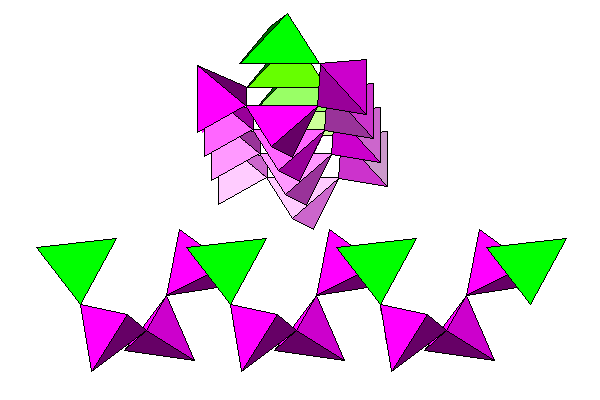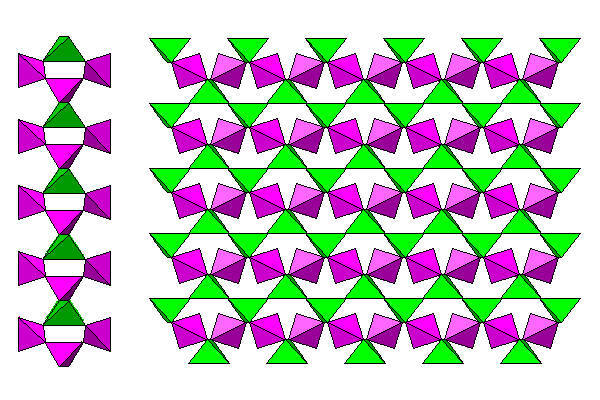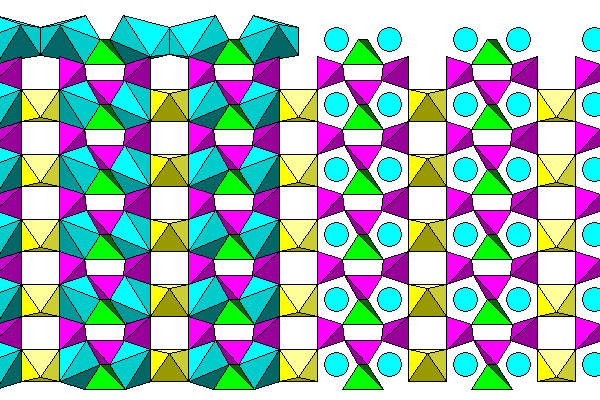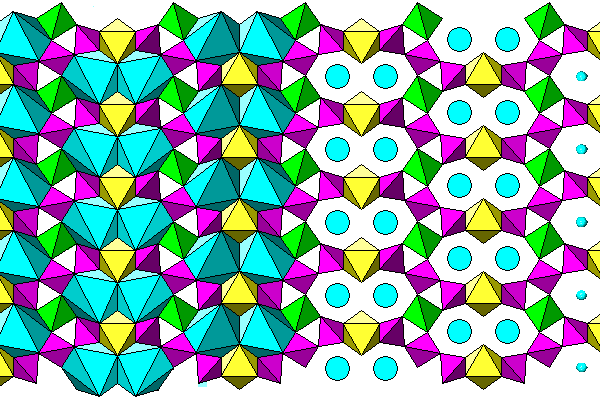Prehnite Structure
Steven Dutch, Professor Emeritus, Natural and Applied Sciences, Universityof Wisconsin - Green Bay
Prehnite is a phyllosilicate, but the silica sheets are thicker and more three-dimensional than other phyllosilicates. It does not crystallize as platy crystals and occurs with zeolites rather than other phyllosilicates. Thus, it tends to be placed at the tail end of the phyllosilicate sections of references, just before the framework silicates.

Prehnite consists of flattened rectangular helices of silica and aluminum tetrahedra. The above diagram shows an oblique end-on view of a helix, with silica tetrahedra in purple and aluminum tetrahedra in green. Lighter colors are used for background tetrahedra. The lower view is a side view of a helix.

Here we see an end-on and side view of a silica sheet. In the end view it looks like a silica and aluminum tetrahedron share an edge. That's a perspective illusion. Close inspection will show that the edges are oblique to each other. All tetrahedra are joined at their vertices.

This view shows the sheets end on. They are cross linked by aluminum atoms in octahedral coordination (yellow) and the cavities between are occupied by calcium (blue).

A different view, this time looking at the aluminum octahedra face-on and showing the large voids occupied by calcium atoms.
Return to Mineralogy-Petrology Index
Return to Thin-Section Index
Return to Crystals and Light Index
Return to Crystal Structures Index
Return to Mineral Identification Tables
Return to Professor Dutch's Home Page
Created 15 October 2009, Last Update